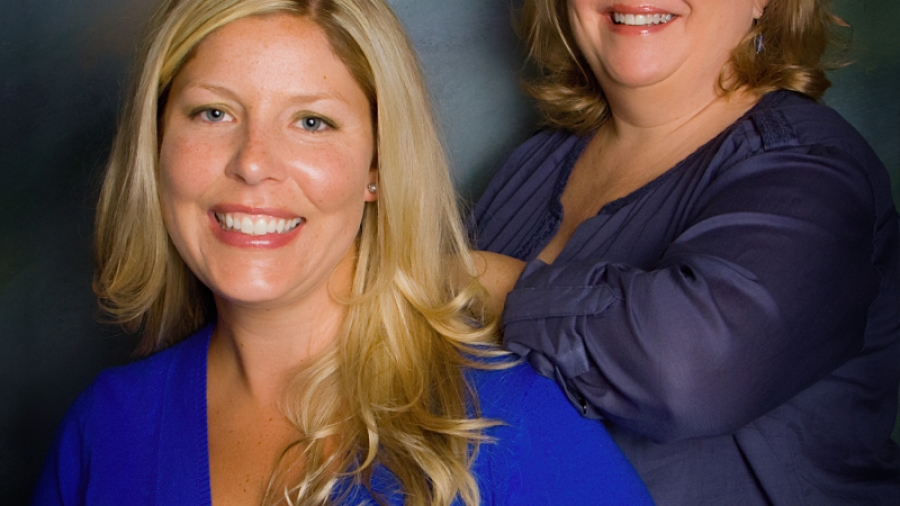Lawyers with Purpose contributing attorney Brittney M. Shearin, Esq. researches and reports on some interesting statistics regarding whether living on a cruise ship could actually be a viable alternative to assisted living.
Introducing March Member of the Month, Peggy Timmel
Timmel Law, which began in 2009, has been an LWP member since 2012. Located in New Albany, IN, it has the unique distinction of serving markets in 2 states, Kentucky and Indiana, or “Kentuckiana.” Attorneys Peggy Timmel, who founded the practice, and Jessica Richards together with a support team of seven, plus Fred, a delightful canine who serves as the “Director Of Goodwill,” provide estate planning, elder law, asset protection, long term care & Medicaid, veterans’ benefits, and probate & estate administration services for their clients. To celebrate Timmel Law’s many successes, LWP sat down with Jessica Richards to talk about their firm.
Building Profitable Referral Relationships: Ask the Right Questions
 Asking the right questions accomplishes several goals. It allows you to find ways to distinguish yourself from your competition and demonstrate the value you offer the allied professional and his or her clients. This can convince the professional to move forward with you. In addition, asking the right questions allows you to determine whether or not you want to forge a relationship with this particular professional. The key is understanding what type of questions to ask allied professionals—and why.
Asking the right questions accomplishes several goals. It allows you to find ways to distinguish yourself from your competition and demonstrate the value you offer the allied professional and his or her clients. This can convince the professional to move forward with you. In addition, asking the right questions allows you to determine whether or not you want to forge a relationship with this particular professional. The key is understanding what type of questions to ask allied professionals—and why.
- Ask questions that help you understand what they do
- Ask questions to understand their experiences when working with attorneys, and what their clients have experienced working with attorneys
- Ask questions to understand where there is opportunity or challenges
- Ask questions to gain an understanding of what your services mean to them
- Ask if they think their clients are planning properly
- Ask questions to help you identify what to expect from this relationship
- Ask questions that let them discuss how they see your firm supporting them and their goals
As you can see, a professional’s answers to these types of questions will give you an opportunity to further demonstrate your value by addressing his or her greatest concerns and showing how the two of you can work effectively together. Equally important, the answers will help you determine whether you want to work with this professional. We’ll talk more about qualifying your referral sources next time.
Building Profitable Referral Relationships: How to Get Off on the Right Foot
 Why should a professional refer his or her clients to you? For starters, the professional must know why and how your services will benefit his or her clients. The professional must also be confident that you will “do right” by his or her clients—basically, that you will provide effective legal representation.
Why should a professional refer his or her clients to you? For starters, the professional must know why and how your services will benefit his or her clients. The professional must also be confident that you will “do right” by his or her clients—basically, that you will provide effective legal representation.
Next, why should the professional refer clients to you rather than the firm down the street? How do you distinguish yourself and assure them that you will keep your promises? Perhaps it’s your process that sets you apart and addresses their initial concerns. Or the number of years you’ve focused on elder law and estate planning. Or the fact that you have plenty of recommendations from former and existing clients. Or maybe, what you have to say is something they have never heard before and they find extreme value in it.
Once you and the allied professional have agreed that there is value in your working together, you may find yourself thinking along the following lines: “This is going well, the professional really likes me, I’m going to get plenty of work from this person.”
Hold on. Remember, your goal isn’t just to have nice meetings. You want meetings that generate revenue. You need to know that this particular professional is someone you’re comfortable working with and a person who has the potential to actually deliver revenue-producing clients to you. In order to know that, you need to ask the right questions. We’ll cover the types of questions you need to ask in our next post.
Building Profitable Referral Relationships: With Whom Should You Meet?
Simply put, you want to meet with professionals that service your market in a different way than you do and whose clients (or patients) can benefit from your services.
So where do you find these professionals? Your sources can be broken down into four categories: institutions such as hospitals and hospices; wholesalers like brokerage houses, insurance companies, and banks; agencies such as nursing homes, RCILs, and ARCs; and advisors, including financial advisors, insurance representatives, accountants, and tax preparers.
It can be helpful to think of these four categories as a funnel, with institutions and wholesalers at the top, agencies and advisors in the middle of the funnel, and their clients (or patients) at the bottom of the funnel, ready to flow into your firm as prospective clients.
Now that we know the institutions, wholesalers, agencies, and advisors with whom you want to meet, let’s look at how to get started on the right foot with them and how to clearly understand your value proposition. We’ll cover that next time.
Why it is worth the time to forge relationships with allied professionals—Yes, you can develop profitable referrals!
 To a large extent, your success is determined by how well you manage your leads and vital relationships, especially referral relationships with allied professionals. Unfortunately, forging and maintaining profitable referral relationships is one of the greatest challenges facing most law firms.
To a large extent, your success is determined by how well you manage your leads and vital relationships, especially referral relationships with allied professionals. Unfortunately, forging and maintaining profitable referral relationships is one of the greatest challenges facing most law firms.
In the coming weeks, we’re going to discuss proven strategies for building a strong referral network. We’ll talk about how to get started on the right foot, the questions you need to ask to qualify your referral sources and properly set expectations, how to track your results, and more.
At the very least, we hope these emails help you understand the importance of the following two concepts:
Contrary to what some potential referral sources would have you believe, your value is not in the referrals you send back. Your value goes far beyond that.
Your goal is not simply to have good meetings with allied professionals. Rather, your goal is to turn meetings into revenue.
Logically enough, building profitable relationships with allied professionals begins with knowing precisely which professionals you should be meeting with. We’ll talk about that next time.
Use the Proper Software and System to Build a More Efficient Team
 Using state-of-the-art software within an effective system allows you to build a highly efficient team and firm. Each workflow is comprised of a series of steps with a defined set of tasks to be completed at each step. Many of the steps are designed to do things automatically, like assign tasks to staff, send emails to update your clients on progress, and much more. Your staff can easily see the work assigned to them and what they need to do next, while you get a crystal clear picture of the workflow throughout your whole firm. You will see every matter’s progress, who is working on what, the steps that need to be taken next, and what might be holding things up. Armed with information like this, you’ll be able to better hold members of your team accountable and improve overall efficiency.
Using state-of-the-art software within an effective system allows you to build a highly efficient team and firm. Each workflow is comprised of a series of steps with a defined set of tasks to be completed at each step. Many of the steps are designed to do things automatically, like assign tasks to staff, send emails to update your clients on progress, and much more. Your staff can easily see the work assigned to them and what they need to do next, while you get a crystal clear picture of the workflow throughout your whole firm. You will see every matter’s progress, who is working on what, the steps that need to be taken next, and what might be holding things up. Armed with information like this, you’ll be able to better hold members of your team accountable and improve overall efficiency.
As we have seen, leading-edge software allows you to generate accurate, customized planning documents following a single client interview. Over time, and with proper training, you may even be able to turn this task over to a paralegal. And in the process, free up more time to pursue new clients and generate new revenue, or to simply work less and live more. The possibilities are limited only by your priorities.
From Efficiency to Proficiency: Automatic Alerts about Potential Planning Mistakes
State-of-the-art asset protection software can alert you to potential problems. Case in point: During the interview, LWP software will display “light bulb” icons offering built-in practice tips and pointers that provide background and help you make informed choices. For example, there is a light bulb that displays information about required minimum distributions, which can help you select the best option for how to treat income from retirement accounts. These practice tips can include the language that would appear in your documents based on the selection you choose, references to case law or other legal authority, and sometimes just a simple explanation of the legal concept to help you make the proper selection for a particular client’s needs.
Light bulbs are just one of the safety nets you’ll find in LWP’s cloud-based software. A big, bold warning appears if one of your selections could impact your client’s Medicaid eligibility. It reminds you to use your best judgment to determine whether the warning applies in your jurisdiction and in your client’s particular situation.
Improve Your Efficiency Further with the Power of Dynamic Interviews
 Another powerful component of some software is the ability to do dynamic interviews. Let’s say John and Jane Sample want separate revocable living trusts and you collect the information needed to do each one. But what if they change their minds and want a joint revocable living trust? The software can help you make the adjustment. When you change the parameter the software then “knows” you are only creating a single joint trust for both John and Jane and it no longer requires you to ask questions for Jane’s individual trust, or enter that information, thereby saving time.
Another powerful component of some software is the ability to do dynamic interviews. Let’s say John and Jane Sample want separate revocable living trusts and you collect the information needed to do each one. But what if they change their minds and want a joint revocable living trust? The software can help you make the adjustment. When you change the parameter the software then “knows” you are only creating a single joint trust for both John and Jane and it no longer requires you to ask questions for Jane’s individual trust, or enter that information, thereby saving time.
So just how much time can you save with the right software? With the simple click of a ‘Finish’ or similar button, all of a client’s relevant information will be assembled into customized WORD documents specifically tailored to meet your client’s needs. In effect, you’ll have turned 15 to 20 hours of document drafting into less than two hours of work.
Next time we’ll discuss how the proper software can enhance document accuracy and coordination.
Create Customized Estate Plans with Greater Efficiency
The process of creating a customized estate plan begins with the client interview. State-of-the-art software uses a single-entry system; as you work through the interview, you only have to enter information once. That information is later reused in the interview and replicated in the assembled documents.
Another benefit of a single-entry system is that it allows you to easily update necessary information. For example, if you need to change Bob Sample’s name to Robert P. Sample (or make a change considerably more complex), you only have to correct it once. The change will automatically be adopted throughout the interview, and ultimately, across every document included in this particular estate plan.
Additionally, the data collection tools within the software and workflows are designed to make it easier for you to gather the information you need to draft your clients’ documents. For example, when your legal assistant or client services coordinator enters a client’s information into a matter within the workflow, the information will populate and pre-fill some of the choices within the software interview.
Next time: Discover the power of Dynamic Interviews








